Egypt: Beautiful Locations off the Beaten Track for an Enjoyable Vacation
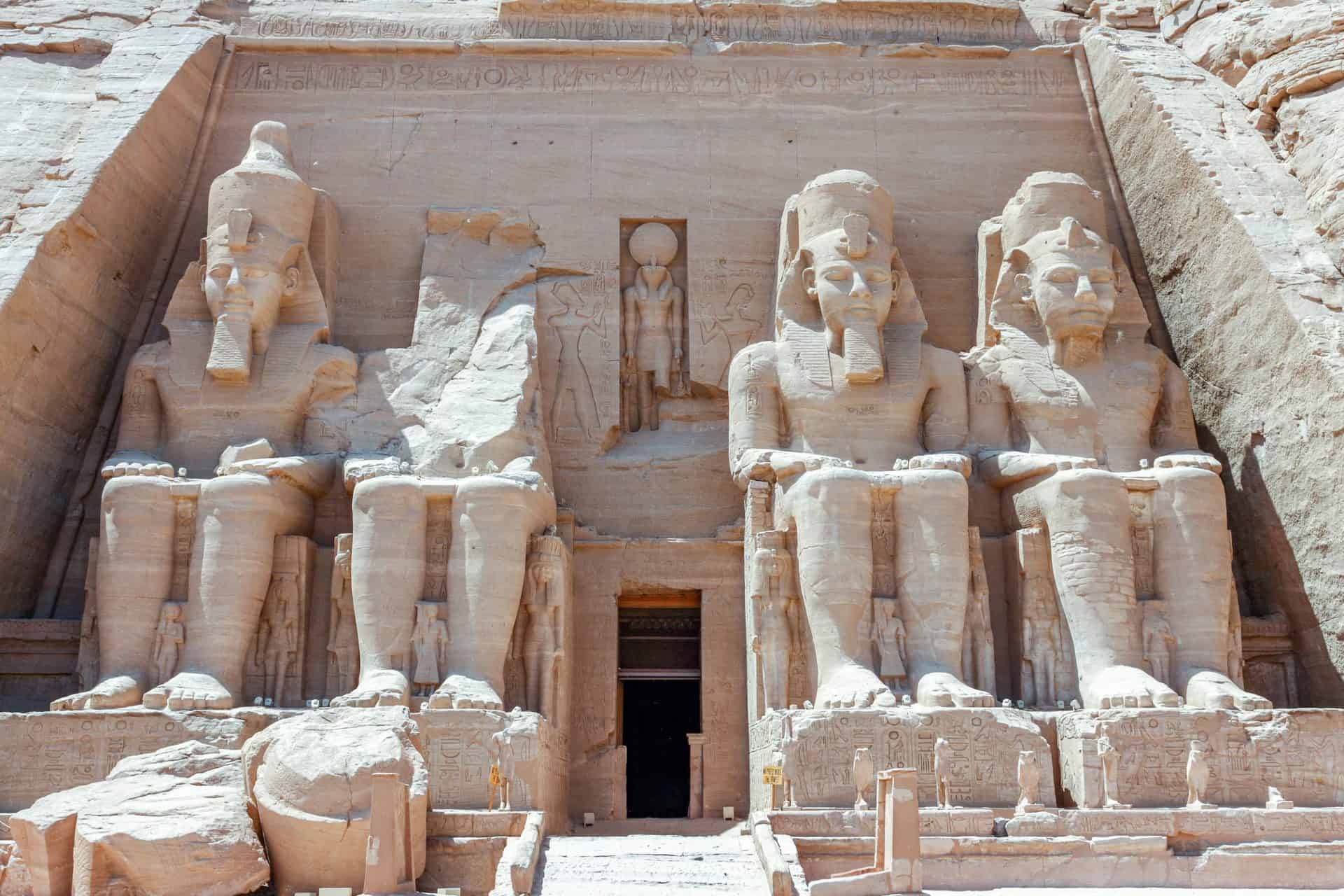
Updated On: April 23, 2024 by Dina Essawy
Every city in Egypt has its unique character and has specific elements that make it special, whether it’s a coastal city, somewhere along the Nile, or even in the middle of the desert. Every city has many locations that offer its visitors a variety of activities and attractions or are simply perfect for relaxation and a laid-back holiday getaway.
Makadi Bay, Hurghada, Egypt
Makadi Bay is a new area constructed in 2004 as a hub for entertainment and vacation. Makadi Bay is a resort town located 30 km south of Hurghada on the coast of the Red Sea. It’s known for its beautiful sandy beaches that are perfect for scuba diving, diving, and snorkeling to explore the natural caves, coral reefs, and marine life. There are many hotels to choose from in Makadi Bay, which accommodate all visitors, as well as the discos and restaurants serving seafood near the bay. If you’re there with your family, you will also find family-friendly attractions, such as a water park and Mini Egypt, with models of famous sights.
The most well-known beaches in Makadi are Serenity Makadi Beach, Sunrise Royal Makadi Resort, Iberotel Makadi Beach, and among the most popular hotels are Stella Di Mare Hotel & Spa, the Makadi Grand Hotel, the Makadi Spa Hotel, Steigenberger Hotel, and the Makadi Palace Hotel.
From Makadi, you can also take a day trip to Luxor to enjoy the majestic historical landmarks, such as Karnak and Luxor Temples.
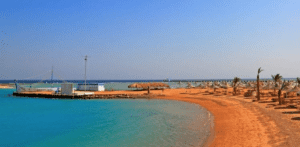
Ras El Bar, Damietta, Egypt
Ras El Bar is a resort city in Damietta, Egypt, overlooking both the Mediterranean and the Nile. It has long been known as a vacation spot for Egyptians before the outcrop of resort towns available today. Although it’s a vacation spot, Ras El Bar still has a long and rich history like many other cities in Egypt.
In ancient Egypt, Ras El Bar was called the Mediterranean Sea; during the Roman era, around 30 AD, it was called the Roman Sea. Its current name of Ras El Bar, came from some sailors who felt that this place can be a shelter from the dangers of the sea. “Ras” means start or edge and “El Bar” means land so it is the start of the land which gives shelter to any sailor experiencing peril at sea.
The name Damietta came from “Tamiats” which was given to the area in Greek and Roman times. Damietta was also mentioned in several ancient manuscripts by the name of Caphtor.
Damietta’s strategic location motivated many of its enemies, including the Crusaders, to attempt to siege the city, which led to the building of several fortresses, castles, and towers to protect it.
In 1248, the king of France, Louis IX, sailed to Damietta, and the people of the city managed to resist his fleet by burning anything that the French army could make use of; they fought against them in several battles which they won, where even King Louis IX fell captive, and they imprisoned him. Later on, King Louis IX paid 4000 Egyptian Pounds to be released and left Damietta on 8 May 1250, which became the National Day of Damietta from then on. The house where the King of France was imprisoned still exists today.
After a long history of battles, Damietta gradually began to change into a tourist destination, starting with Ras El Bar, which became a favoured holiday destination for the rich and famous in Egypt.
Today, many still frequented the city, especially after several new international hotels, such as Steinberger, opened there.
The city has numerous shops and restaurants, especially around El Lesan, where the Mediterranean Sea meets the Nile River. This area has recently been developed to become suitable for the increasing number of tourists who frequent the city every year.
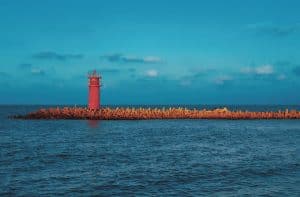
Fjord Bay, Taba, Egypt
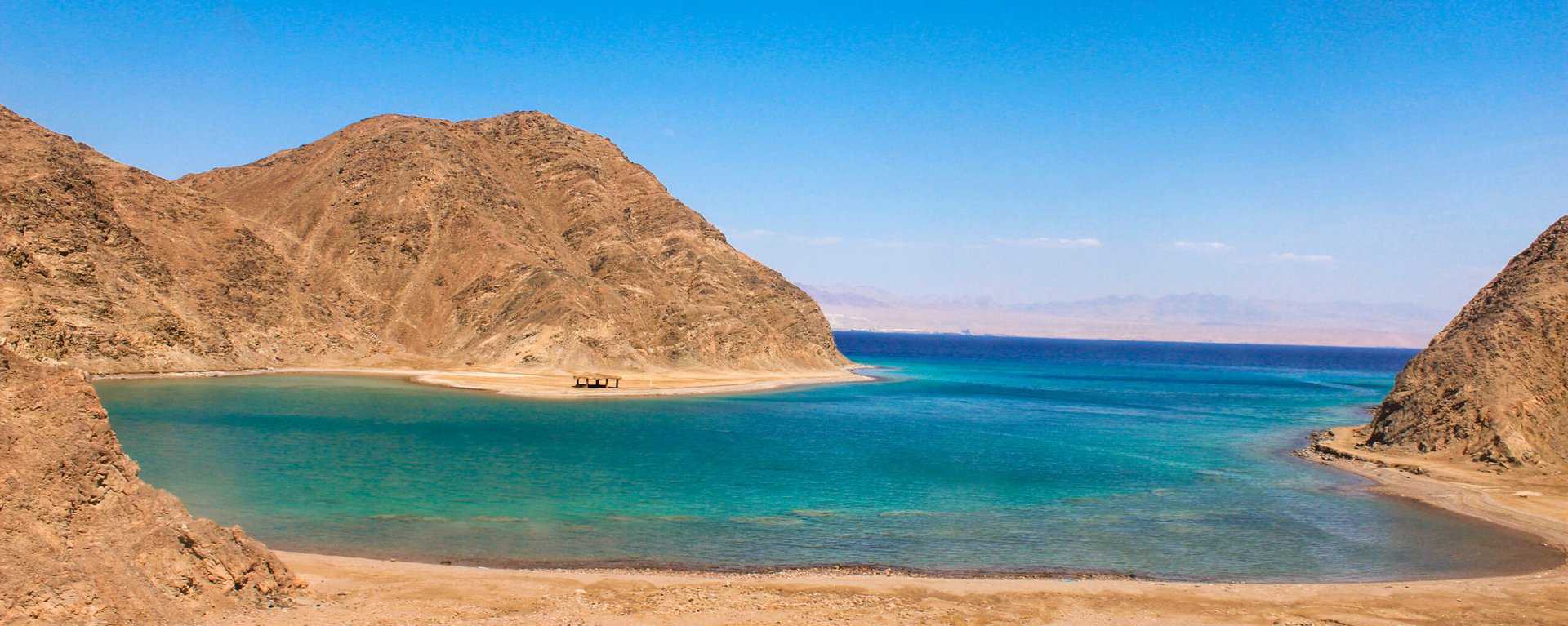
Rated as one of the 100 best beaches in the world, Fjord Bay in Taba is a stunning stretch of beach in Taba, Egypt, near the Gulf of Aqaba at the borders of four different countries. There are many attractions in Taba, including the Red Sea the stunning Salah El-Din Castle, or Pharaoh’s Island. The castle was built by Baldwin I, King of Jerusalem, in 1116 AD in a strategic location at the crossroads of trade and pilgrim routes in the region.
The castle gained its name when a battle took place there in 1170. Salah El-Din captured the fortress and worked on expanding it. Among the interesting things about the fortress is its entrance, which is zigzagged as a defence mechanism to confuse and blind any invaders attempting to storm the castle.
The fortress includes sleeping quarters for troops, bathhouses, and kitchens. It also has towers for pigeons, which were used for relaying messages, circular towers for archers, and a mosque.
A small lake can be found next to the castle, which was surrounded by a defensive wall at some point. It had a small entryway that small boats would stop at to transport supplies from large ships to the castle, bringing them what they needed, whether food, weapons, or anything else they required, without having any of the ships come close to the castle itself.
Fjord Bay is a spectacular diving spot at Fjord Hole. It is a site filled with coral reefs and amazing marine life at 16 to 24 meters of depth.
Less experienced divers can visit Fjord Banana, a shallow reef in the shape of a banana, reaching a depth of 12 meters. The reef also includes a wide variety of fish and corals.
The landscape of Fjord Bay is stunning and has become a popular spot for swimming, diving, hiking, climbing, boating, and many other outdoor activities. It is a picturesque location that you will not soon forget.
Some hotels near the area include Tolip Taba Resort and Spa, The Bayview Taba Heights Resort, Strand Beach & Golf Resort Taba Heights, Mosaique Beach Resort Taba Heights, and Movenpick Taba Resort & Spa.
We highly recommend visiting Fjord Bay and enjoying the beautiful beach and the sparkling waters.
Temple of Seti I in Sohag, Egypt
One of the most impressive structures dating back to the pharaonic era is the temple of Seti I in Sohag. The temple is in the ancient city of Abydos, where numerous ancient monuments and antiquities were uncovered. Abydos is one of the oldest cities in Egypt, dating back 5000 years, and it’s located about 11 km west of the Nile River in Al Belina, Sohag. It is considered one of the brilliant archaeological sites in Egypt, as it was the location of many ancient temples, and it is believed that Osiris was buried there.
The temple was constructed by Seti I, a king of the 19th dynasty, son of Ramses I, and father of Ramses II. He was one of Egypt’s greatest rulers who built one of the most magnificent temples at Abydos and the Great Hypostyle Hall in Karnak Temple. The artwork and architecture commissioned during Seti’s rule are rich, as no expense was spared, and the workmanship shows that attention to detail is evident. However, Seti I died before his temple was finished, and it was completed by his son Ramses II. The temple also includes a royal palace and a chapel dedicated to King Ramses I. There are seven chapels dedicated to the gods Ptah, Ra Horakhaty, Amun, Isis, Osiris, and Horus that used to host the statues of each god.
The entrance to the temple is located on the northeast side and leads to the first open court. A stairway leads to a terrace with a hall lined with pillars that takes you to the second court. Ramses II decorated the courtyards with scenes from the battle of Qadesh and scenes as he made offerings to the gods. The first hypostyle hall has twelve pairs of sandstone papyrus columns, while the second hypostyle hall has thirty-six similar columns to the ones in the first.
The temple holds inscriptions from the 19th Dynasty, known today as the Abydos King List. Furthermore, antiquities dating back to the 30th century BC were found in the Temple of Seti I.
The city of Abydos was important for the ancient Egyptians as it was a burial site for the kings and Pharaohs until king Djoser, who constructed the step pyramid and relocated the ancient royal necropolis to Saqqara in Giza.
However, during the intermediate period, Abydos retained its position as a royal necropolis where many mortuary rituals were carried out, especially those associated with the god Osiris, whom the ancient Egyptian believed was buried there.
Among the other famous constructions in the city are the two pyramids built by King Ahmos, who was able to defeat the Hyksos in the 16th century BC.
Aside from the Temple of Seti I, the Temple of Ramses II is another important temple in the area.
Abydos was certainly one of the most sacred cities in ancient Egypt, which is why tourists still flock to it to this day.
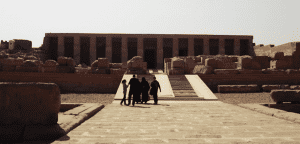
Nuweiba in Sinai, Egypt
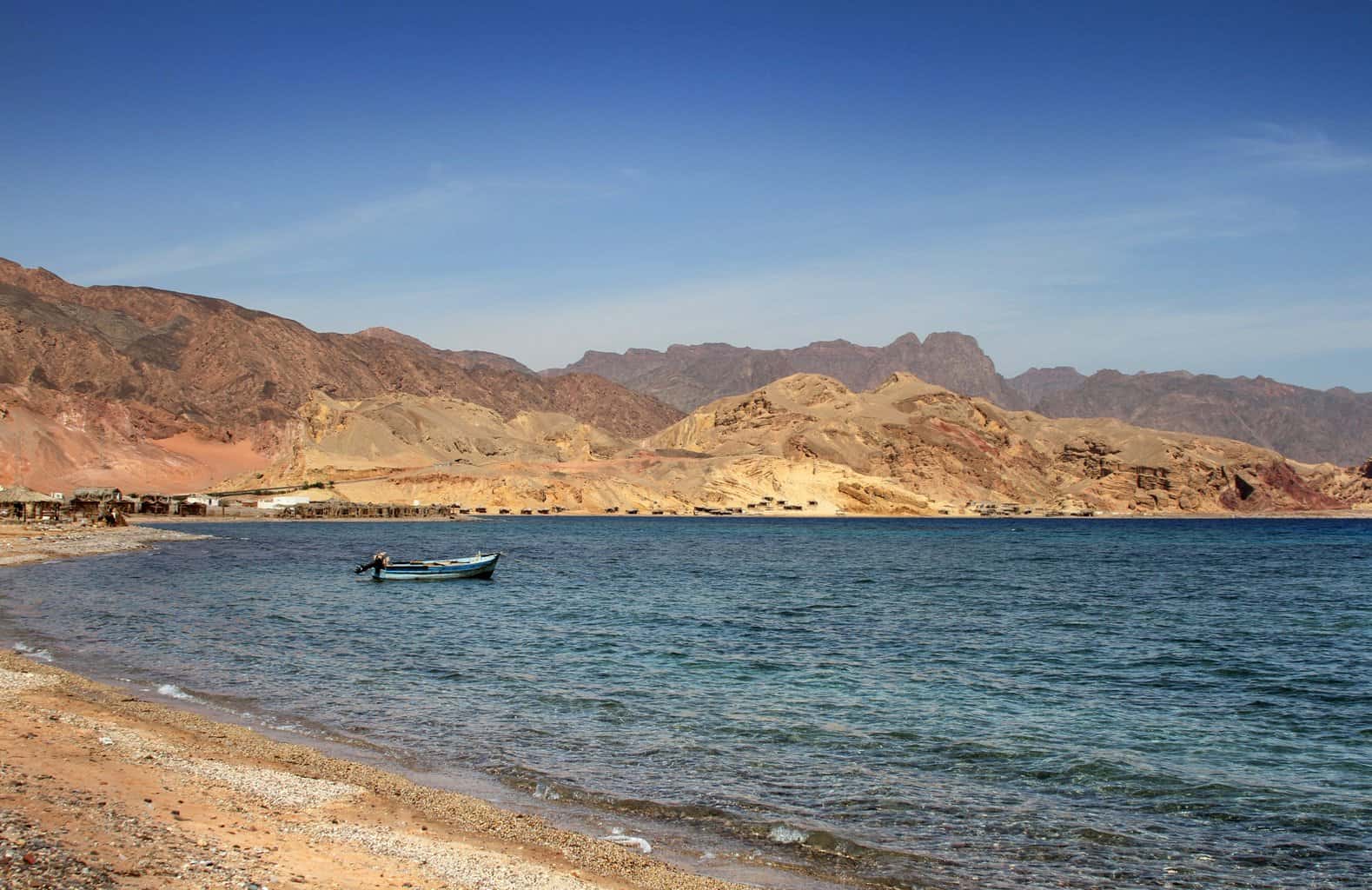
Nuweiba is a coastal town in the Sinai peninsula. It is a perfect holiday destination in Egypt, as it’s surrounded by the pristine crystal blue waters of the Gulf of Aqaba. There are many beautiful sights to visit in Nuweiba, such as the Colored Canyon; a narrow trail surrounded by beautifully colored rock formations, ranging from dark purple to bright yellow. Bedouin tour guides help tourists through the canyons and explain the significance of the canyon in their culture. Most hotels can arrange the trip for you for about EGP 50-100 per person.
Another must-see location near Nuweiba is Ain Khudra; a natural oasis that is often used as a hiking destination and place to meditate amidst the beautiful palm trees and tranquil pools. There are also many incredible natural formations surrounding this area, as well as many diving locations, including Duna Reef and Coral Island where you can enjoy the diverse marine life.
The area was inhabited by two Bedouin tribes; the Tarabin tribe in the north, and the Muzeina tribe in the south. The town has many modern hotels, but for those looking for a more authentic experience, you can also find Bedouin-style camps where budget-friendly huts are available for rent located in Tarabin village, one km north of Nuweiba.
From Nuweiba, you can actually watch the sunrise rising over the Hijaz mountain range from Saudi Arabia and the Aqaba Gulf. For some rigorous activates, you can trek with camels from the beach in Tarabin for around EGP 25 per hour, or go for an early morning walk northwards to Red Rock by the sea.
Although you can go diving and snorkeling in Nuweiba, there are better spots for those activities in the nearby Ras Shaitan (Devils Head) a short car ride away, or at South Cove a few kilometers to the north.
Make sure to stop at Castle Zaman, an oasis for trekkers and campers, where you can spend a relaxing day with an amazing view of the gulf.
For some shopping, you can find several small shops along Tarabin beach selling local souvenirs and artifacts, such as handmade Bedouin rugs and silver.
All in all, Nuweiba provides you with stunning views of Saudi Arabia’s range of mountains, the Gulf of Aqaba, the majestic Sinai Mountains, and endless stretches of white sand, and crystal waters. Nuweiba is a perfect destination where you can unwind and relax away from the usual hustle and bustle of the cities. It is also a perfect destination to go on exploration tours into the depths of the Sinai desert, where you can visit and explore St. Catherine Monastery, trek through Mount Sinai or explore the nearby towns overlooking the Red Sea, including Taba, Dahab, and Sharm El-Sheikh, or explore the national parks, such as Ras Mohamed National park and Abu Gallum National Park.
Abu Simbel Temple in Aswan, Egypt
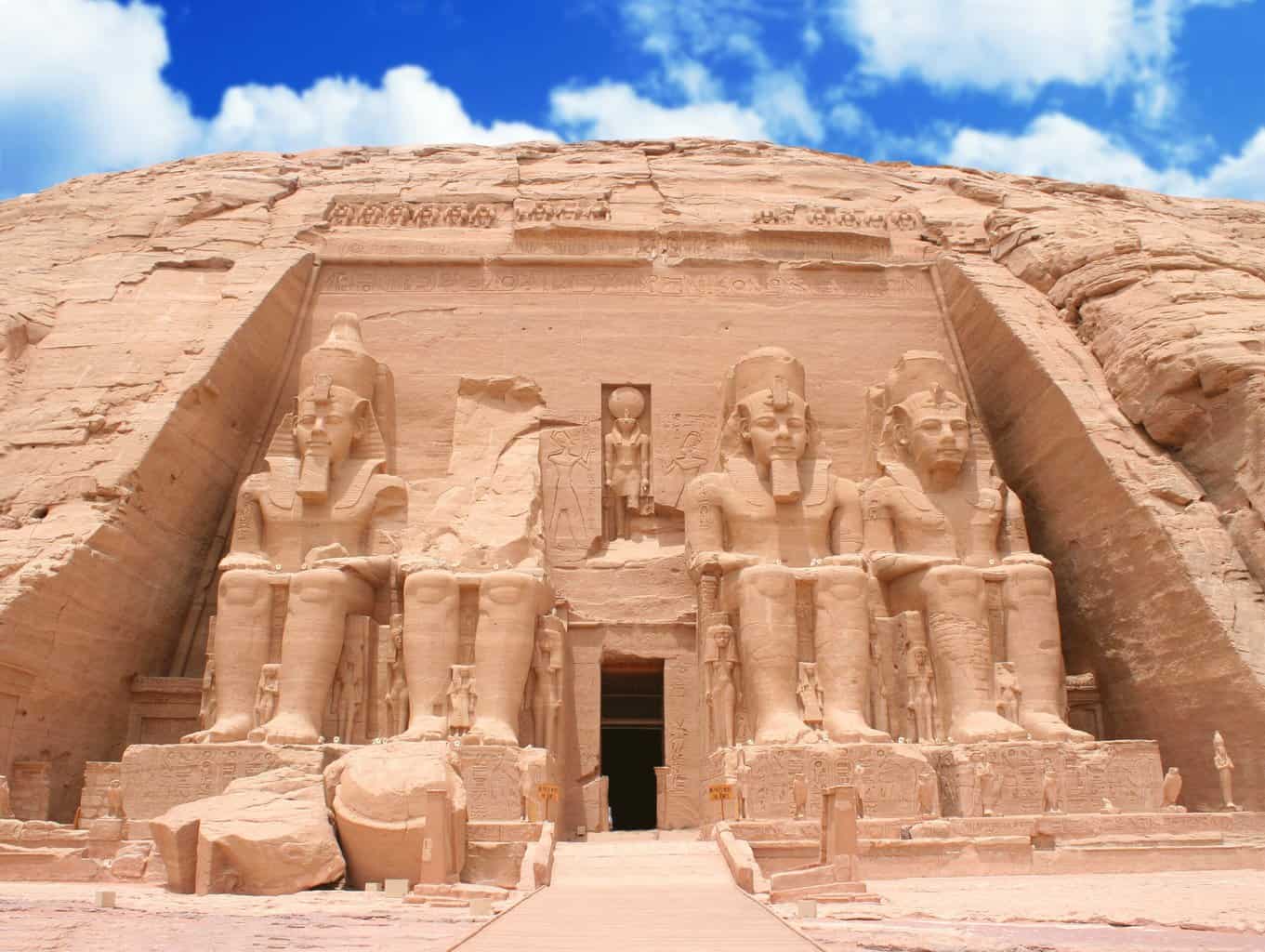
The Temple of Abu Simbel in Aswan is one of the most important historical sites in Egypt. It was saved from the rising waters of Lake Nasser in a massive archaeological rescue plan sponsored by UNESCO in the 1960s by actually cutting up the temple and putting it back together on higher ground. An international team of engineers and scientists, funded by more than 50 countries, disassembled the temple and reconstructed it 60 meters above the previous site. The project lasted from 1964 to 1968. The Temple of Abu Simbel was designated a UNESCO World Heritage site in 1979.
The temple is dedicated to the Pharaoh Ramsis II and gods Ra, Amun, and Ptah and is located 280 km south of Aswan. The temple was built between 1274 BC and 1244 BC and rediscovered in 1813 by Swiss explorer Jean Louis Burkhart.
The temple was built in such a way that twice a year, on February and October 20, the rays of the sun penetrate the sanctuary and illuminate the sculpture at the very back wall, except for the statue of Ptah, the god of the Underworld, who always remains in the dark. These dates are said to coincide with the king’s birthday and his coronation day respectively. This phenomenon is attended by hundreds of tourists every year.
The four colossal statues of Ramses on the front façade of the temple are magnificent to behold and were reportedly constructed to scare Egypt’s enemies attacking from the south. The inscriptions on the southern side by Greeks in the 6th century BCE have provided important evidence of the early history of the Greek alphabet. The temple consists of three halls decorated with statues of the king and with painted scenes of his victory in the Battle of Qadesh.
At 6:00 pm every day during the winter and 7:00 pm in the summer, a sound and light show is held where headphones are provided to allow visitors to hear the commentary in various languages.
Pompey’s Pillar in Alexandria, Egypt
Pompey’s Pillar is a Roman-era column located in Alexandria that was built between 298 and 302 AD in honor of the Roman emperor Diocletian. The column originally supported a colossal statue of the emperor in armor. It stands next to the Serapeum of Alexandria, beside the ruins of the temple of Serapis.
Emperor Diocletian came to Egypt to suppress a revolt of the usurper Domitius Domitianus. The dedication of the column monument and its statue of Diocletian describes Diocletian as the city-guardian god of Alexandria.
The column was originally part of the sanctuary complex of Serapis during the reign of King Ptolemy III Euergetes in the 3rd century BC. The building was so magnificent that it was considered by the Roman historian Ammianus Marcellinus “a marvel rivaled only by Rome’s sanctuary to Jupiter Optimus Maximus on the Capitoline Hill, the Capitolium”.
The column stands at 26.85 m high, made of red granite estimated to be 285 tons. The Greek inscription on the column’s socle says “to the most just Emperor, tutelary of Alexandria Diocletian, the invincible, Postumus, the Prefect of Egypt.” The monument commemorated the victories of the emperor on one of his visits to Egypt.
The name of the pillar came from the Crusaders who believed that the ashes of Pompey, the Roman political and military leader, were in a pot at the top of the column. There are still some monuments around the column as well as the remains of the Serapium, which was built during the reigns of Ptolemy II and Ptolemy III, but sustained damage due to the revolts of the Jewish population in Alexandria and was rebuilt again during the reign of Hadrian, only to be destroyed again after the appearance of Christianity.
The Serapeum consisted of 100 steps leading to a high platform at the side of which was a basin used for purification, as well as two galleries, the first of which had a black statue of basalt representing the God Serapis in the shape of a bull, dating back to the reign of Hadrian. The statue is now displayed at the Greco-Roman Museum in Alexandria. The second gallery was a burial chamber for the mummies of Anubis.
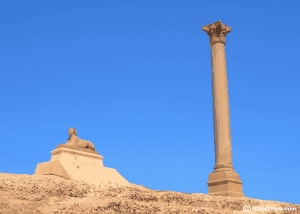
Valley of the Nobles in Luxor, Egypt
Valley of the Nobles is a necropolis situated along the West Bank of the Nile near Luxor and it was an ancient city where many burials took place. So far, there are around 415 tombs of the most powerful courtiers, civil servants, generals, nobles, and wealthy people of the ancient city. The location is known to contain hundreds of tombs of other tombs, but most of them have not yet been located.
Although the Valley of the Nobles is not as well-known as the Valley of Kings and Queens, it is still equally fascinating and well worth a visit to see the richly decorated tombs with frescoes depicting the lives of their inhabitants. The area includes the tomb of Sennofer who was the Mayor of Thebes (the ancient name for the city of Luxor). This tomb has some beautiful scenes depicting harvesting scenes and grapevines.
Also make sure to check out the tomb of the Noble Ra-Mose which offers a glimpse of life during the reign of Pharaoh Akhenaten, one of the earliest rulers to follow the monotheistic faith. Ra-Mose was the mayor of Thebes during the reign of Amenhotep III and his son Akhenaton.
Some of the well-known tombs in the Valley of the Nobles include Tomb 100 which belonged to Re-khme–e, who was vizier of Tuthmosis III and Amenhotep II. The tomb’s walls are decorated with many scenes depicting life in ancient Egypt, one which represents the arrival of foreign delegations to the court of the Vizier Re-khme-Re, offering gifts to the King of Egypt. Some inscriptions can also be found in this tomb mentioning the duties and responsibilities of the vizier in order to let justice prevail on Earth.
There is also the tomb of Nakht, a noble, scribe, and an astronomer in the Temple of Amon during the time of the reign of King Tuthmosis IV. This tomb is small but has some of the most colorful and well-preserved scenes depicting Nakht while hunting with his wife, as well as a scene of female musicians playing their instruments as a blind singer serenades the crowds.
Moreover, there is the tomb of Menna, one of the most famous and most beautiful tombs in the Valley of the Nobles. It belonged to a noble with the title of land surveyor, during the reign of King Tuthmosis IV, who was responsible for estimating the amount of taxes to collect from the farmers. The tomb features scenes of daily life and portraits of Menna and his wife as they make an offering to the God Osiris.
Currently, only 15 tombs are open to the public, but the site is well worth a visit if you’re ever in Luxor.
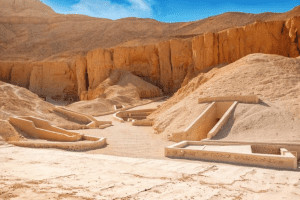
There are many locations across Egypt that are not so well-known among tourists and so they may be less crowded and perfect for visitors looking for attractions that are not bombarded by people every single day. The attractions on this list include landmarks and locations suitable for all tastes, preferences, and ages, whether you prefer relaxing by the beach or trekking through the desert or exploring ancient temples.






